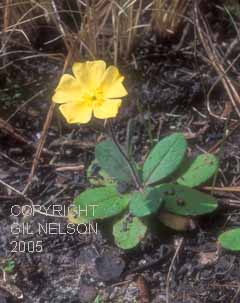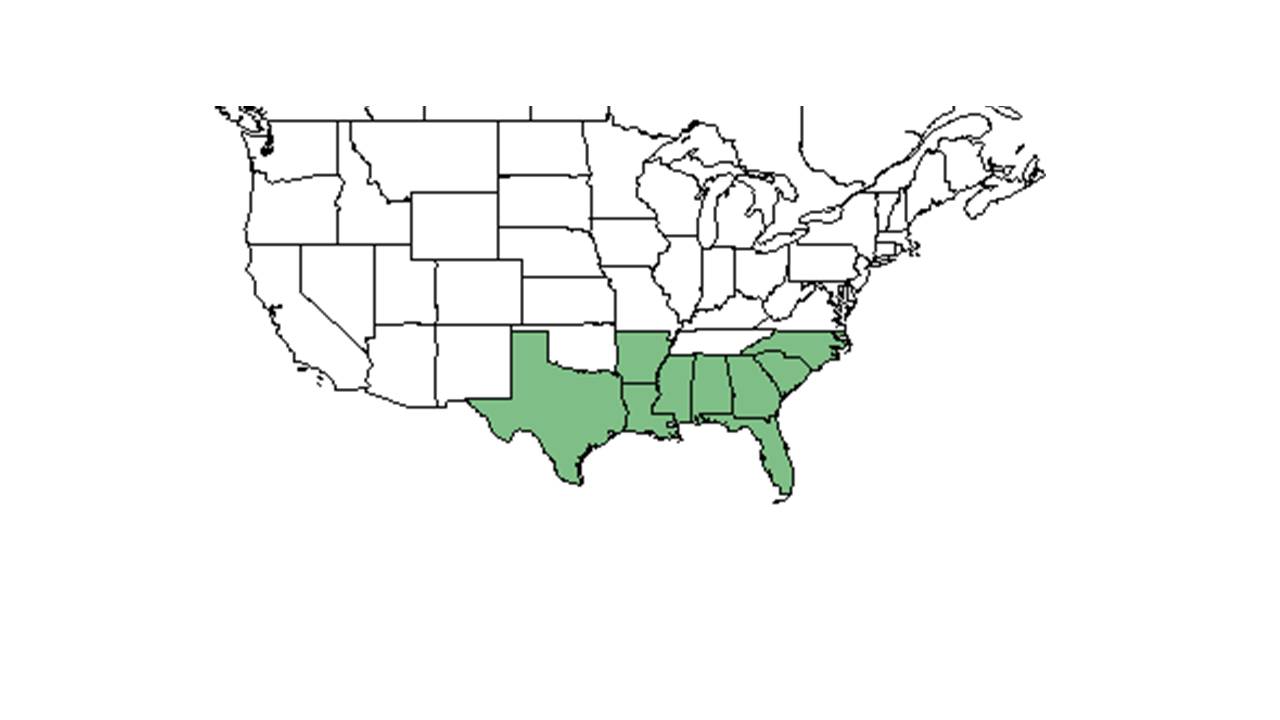Difference between revisions of "Crocanthemum carolinianum"
(→Description) |
|||
| Line 54: | Line 54: | ||
<!--===Diseases and parasites===--> | <!--===Diseases and parasites===--> | ||
| − | ==Conservation and | + | ==Conservation, cultivation, and restoration== |
This species is listed as critically imperiled and has a state rank of S1 in North Carolina.<ref>[[http://explorer.natureserve.org]] NatureServe Explorer. Accessed: April 22, 2019.</ref> | This species is listed as critically imperiled and has a state rank of S1 in North Carolina.<ref>[[http://explorer.natureserve.org]] NatureServe Explorer. Accessed: April 22, 2019.</ref> | ||
| − | + | ==Cultural use== | |
| − | == | ||
==Photo Gallery== | ==Photo Gallery== | ||
<gallery widths=180px> | <gallery widths=180px> | ||
Revision as of 13:42, 8 June 2021
| Crocanthemum carolinianum | |
|---|---|

| |
| Photo was taken by Gil Nelson | |
| Scientific classification | |
| Kingdom: | Plantae |
| Division: | Magnoliophyta - Flowering plants |
| Class: | Magnoliopsida – Dicotyledons |
| Order: | Violales |
| Family: | Cistaceae |
| Genus: | Crocanthemum |
| Species: | C. carolinianum |
| Binomial name | |
| Crocanthemum carolinianum (Walter) Michx. | |

| |
| Natural range of Crocanthemum carolinianum from USDA NRCS Plants Database. | |
Common names: Carolina Frostweed; Carolina Sunrose
Contents
Taxonomic notes
Synonym: Helianthemum carolinianum (Walter) Michaux.[1]
Varieties: none.[1]
Description
Crocanthemum carolinianum is a perennial herbaceous species.
Generally, for the Crocanthemum genus, they are erect, heraceous or suffrutescent perennials with alternate, stellate-pubescent leaves. There are two types of flowers, chasmogamous and cleistogamous. Chasmogamous flowers are on the pedicels that elongate to usually more than 1 cm long with large showy, tallow petals; there are numerous stamens and large sepals. The cleistogamous flowers are on the pedicels are usually less than 3 mm long, where the petals are absent, the stamens are few and the sepals are smaller than those of the chasmogamous flowers. The sepals are in 2 whorls, the outer are narrower than the inner. The capsule is 3-locular.[2]
Specifically, for Crocanthemum carolinianum species, the roots have tuberous thickenings, the stems grow 1-3 dm tall, are pilose, arising from a basal rosettes of leaves. The leaves are widely elliptic to obovate, or nearly lanceolate, growing 2-5 cm long, and 0.7-2 cm wide, stellate pubescent on both surfaces, with longer trichomes above; basal leaves are often somewhat erose,usually larger than the stem leaves; the petioles grow 1-3 mm long. The cleistogamous flowers are absent. The chasmogamous flowers are solitary, are opposite a leaf (or appearing internodal). There are 6 sepals, the outer 3 linear, growing 5-10 mm long, are acute to acuminate, stellate pubescent; the petals growing 1.5-2 cm long. The capsules are globose to subglobose, growing 7-9 mm long. The seeds are reddish black in color, papillose, and growing 0.8-1 mm long.[2]
Crocanthemum carolinianum does not have specialized underground storage units apart from its fibrous roots.[3] Diaz-Toribio and Putz (2021) recorded this species to have a water content of 60.5% (ranking 58 out of 100 species studied).[3]
Distribution
This species is native to the Gulf Coastal Plain, ranging from northeast North Carolina to south Florida and west to east Texas and Arkansas.[4]
Ecology
Habitat
C. carolinianum can be found in longleaf pine-wiregrass savannas and dry pine flatwoods, as well as some disturbed areas, like mowed areas and fields.[4][5] This is an indicator species of the North Florida subxeric sandhills community.[6] It grows well in sunny, well drained habitats.[7] It has also been found to grow near active gopher tortoise mounds.[5] While it is an upland species, it occurs in hydric and non-hydric ecotones as well as upland transect zones.[8]
Phenology
C. carolinianum has both chasmogamous flowers and cleistogamous flowers. The chasmogamous flowers have 5 petals and numerous stamen, while the cleistogamous flowers lack petals and have few stamen.[9] Flowering has been observed in February, March, and April.[5] However, common flowering time is between April and May as well as between July and August.[4]
Fire ecology
This species occurs in habitat that burns frequently.[5]
Conservation, cultivation, and restoration
This species is listed as critically imperiled and has a state rank of S1 in North Carolina.[10]
Cultural use
Photo Gallery
References and notes
- ↑ 1.0 1.1 Weakley, A.S. 2015. Flora of the southern and mid-atlantic states. Working Draft of 21 May 2015. University of North Carolina at Chapel Hill, Chapel Hill, North Carolina.
- ↑ 2.0 2.1 Radford, Albert E., Harry E. Ahles, and C. Ritchie Bell. Manual of the Vascular Flora of the Carolinas. 1964, 1968. The University of North Carolina Press. 718-9. Print.
- ↑ 3.0 3.1 Diaz-Toribio, M.H. and F. E. Putz 2021. Underground carbohydrate stores and storage organs in fire-maintained longleaf pine savannas in Florida, USA. American Journal of Botany 108: 432-442.
- ↑ 4.0 4.1 4.2 Weakley, A. S. (2015). Flora of the Southern and Mid-Atlantic States. Chapel Hill, NC, University of North Carolina Herbarium.
- ↑ 5.0 5.1 5.2 5.3 Florida State University Robert K. Godfrey Herbarium database. URL: http://herbarium.bio.fsu.edu. Last accessed: June 2014. Collectors: Robert K. Godfrey, Chris Cooksey, R. Komarek, Loran C. Anderson, and Richard R. Clinebell II. States and Counties: Florida: Leon. Georgia: Grady and Thomas.
- ↑ Carr, S. C., et al. (2010). "A Vegetation Classification of Fire-Dependent Pinelands of Florida." Castanea 75(2): 153-189.
- ↑ [[1]]Native Florida Wildflowers. Accessed: April 16, 2016
- ↑ Kirkman, L. K., et al. (1998). "Ecotone characterization between upland longleaf pine/wiregrass stands and seasonally-ponded isolated wetlands." Wetlands 18(3): 346-364.
- ↑ [[2]]Native Plants of the Carolinas and Georgia. Accessed: April 16, 2016
- ↑ [[3]] NatureServe Explorer. Accessed: April 22, 2019.